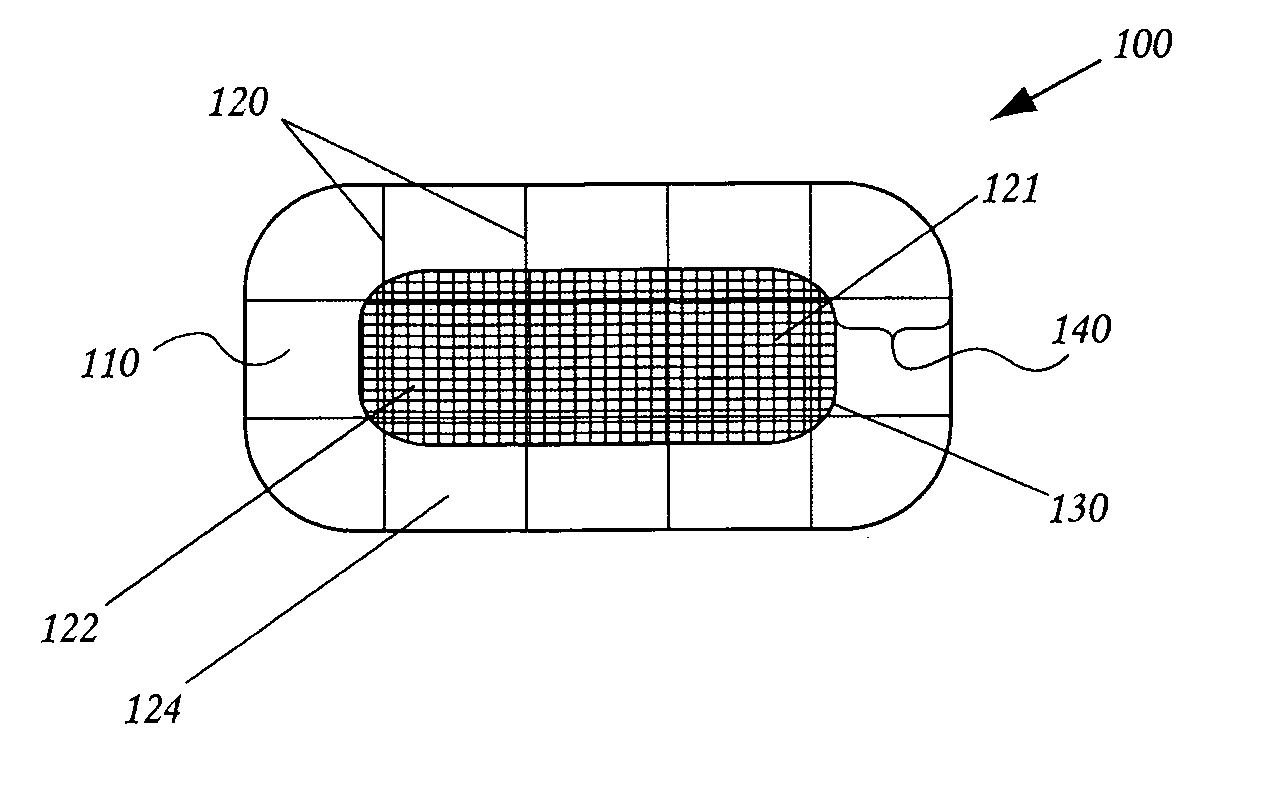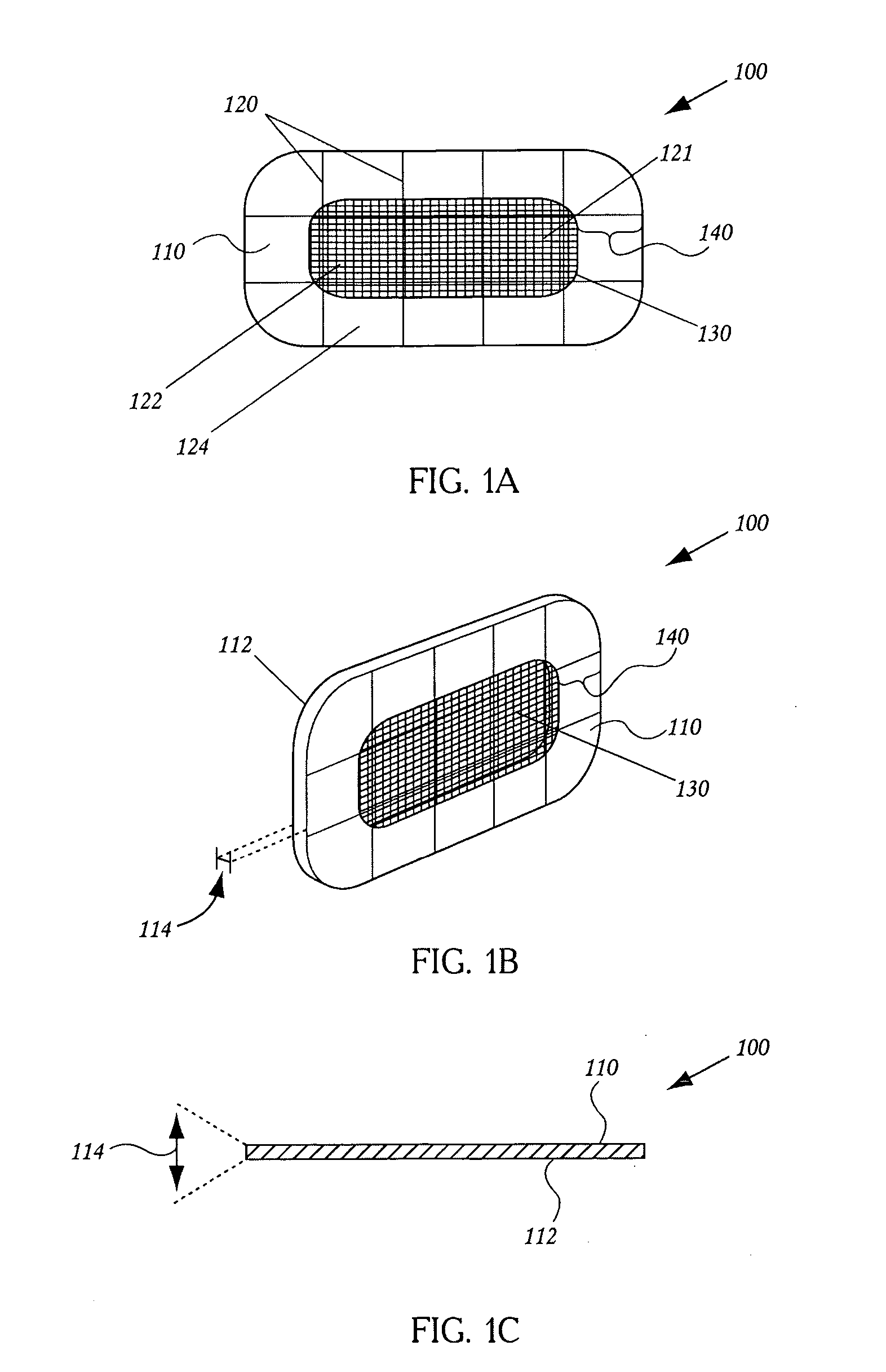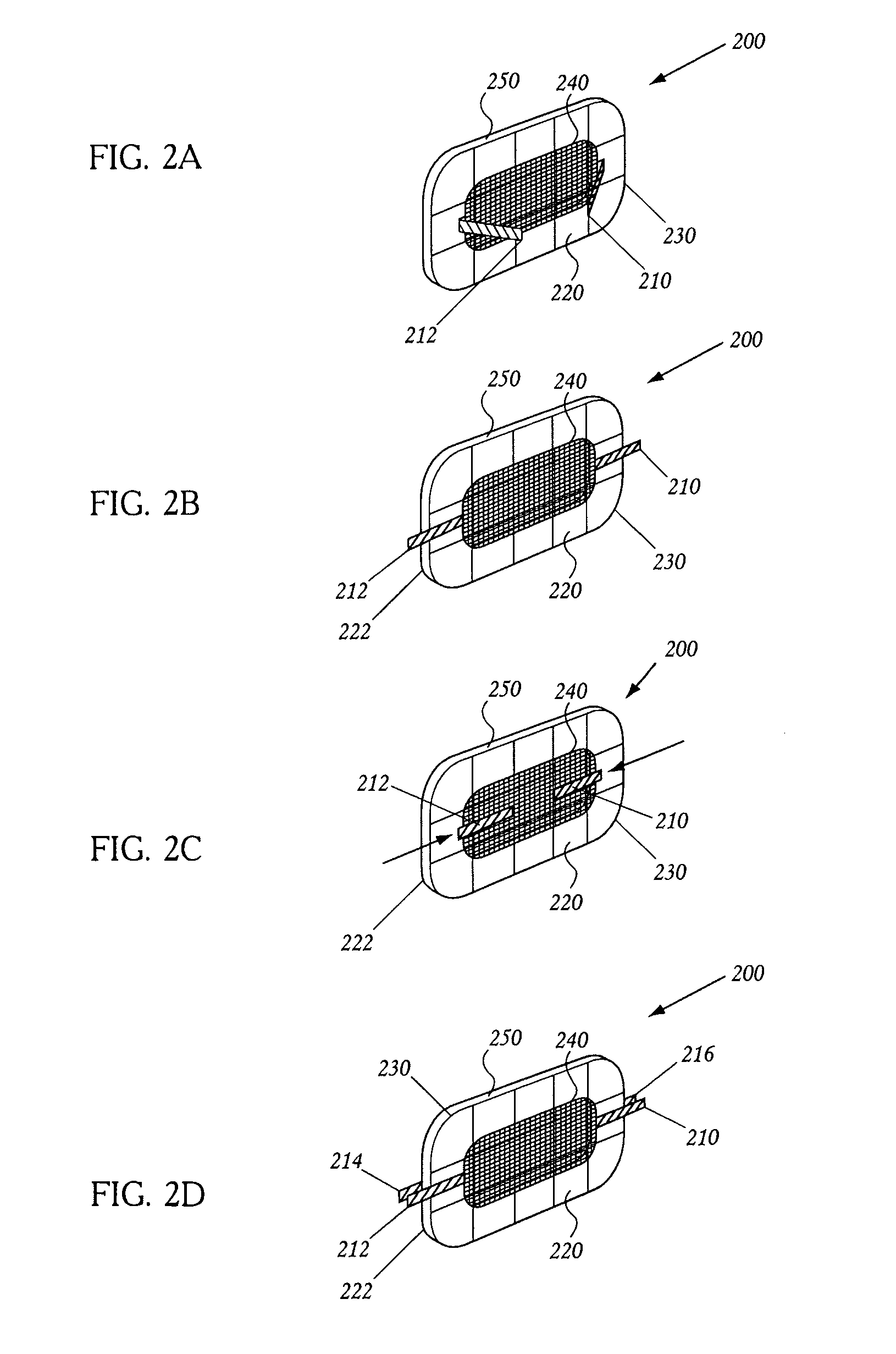Emboli diverting devices created by microfabricated means
a technology of embolic material and micro-fabricated devices, which is applied in the field of implantable medical devices for filtering and/or diverting embolic material from blood, can solve the problems of greatest burden, disability, death and health care expenditure, and serious long-term physical and mental disability
- Summary
- Abstract
- Description
- Claims
- Application Information
AI Technical Summary
Benefits of technology
Problems solved by technology
Method used
Image
Examples
examples
I. Laser Micromachining
[0182] A substantially planar embolic filter was produced generally following the following laser cutting process. Using stock 25 micron stainless steel sheet metal, a 355 nm q-switched Nd:YVO4 laser system was used in conjunction with a direct write software program to produce a filter with 125-150 micron pores and 15-25 micron strut diameters. The struts were substantially ovoid and the diameter was consistently found to be in the range of 15-25 microns. The 25 micron thickness was amenable to folding of the device into a sheath. The porosity index of the device is between 75 and 78%.
[0183] A similar methodology was used to produce a filter with 10-15 micron strut diameters and pore sizes from 125-150 microns. The porosity index of this filter is approximately 79-83%.
II. Chemical and Electrochemical Processing
[0184] To further decrease the size of the struts and therefore increase the porosity of the filter and without having to deviate from the laser ...
PUM
 Login to View More
Login to View More Abstract
Description
Claims
Application Information
 Login to View More
Login to View More - R&D
- Intellectual Property
- Life Sciences
- Materials
- Tech Scout
- Unparalleled Data Quality
- Higher Quality Content
- 60% Fewer Hallucinations
Browse by: Latest US Patents, China's latest patents, Technical Efficacy Thesaurus, Application Domain, Technology Topic, Popular Technical Reports.
© 2025 PatSnap. All rights reserved.Legal|Privacy policy|Modern Slavery Act Transparency Statement|Sitemap|About US| Contact US: help@patsnap.com



